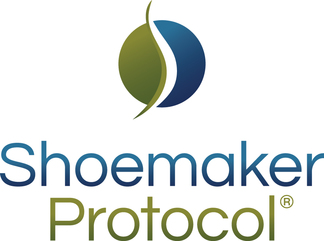Week of April 24, 2023

Mold in automobiles
QUESTION: Is it likely that I have cross-contaminated my car seeing as I drive in it, in my moldy clothes and with other items from my home on a daily basis? If that is the case, do I need to sell my car as well or can it be cleaned? The interior of my car is cloth, not leather, if that makes a difference.
ANSWER: The trouble with cleaning for mold is where do you stop? There are many chemically sensitive people who have to get new cars. Cleanable leather surfaces are better for routine cleaning purposes.
That being said, for most people the car isn’t the problem. Be careful about the antifreeze system in a car as that system’s glycol ethers are a real problem. (Read the next question for more on that).
You can also run an ERMI/HERTSMI test on your car to find out if mold is the culprit before you sell it. If it turns out it is not a source of contamination, consider cleanable leather or faux/leather seat covers to help safeguard against cross-contamination in the future.
2/ Mold in automobiles
QUESTION: Can cars be moldy creating illness the same as indoor environments?
ANSWER: Most assuredly yes. With flooding and extreme weather conditions becoming so common in the U.S. it is almost a daily occurrence to hear someone purchasing a used vehicle without being informed of its history. I am not sure if Car Fax records water intrusion in vehicles but there should be some registry to indicate whether the vehicle was under water at some time or not. It happens more than expected, especially in “flood states.”
Condensation within air conditioning systems can also create
an environment conducive to microbial growth. Cross contamination can also happen from clothing and hauling items.
I would suggest that you also consider problems with the heater core of the vehicle as leaks permitting entry of glycol ethers into the indoor air of an automobile are not uncommon. You may want to ask the mechanic to pressurize your antifreeze system to be sure there is no chance for contamination of the indoor air. The symptoms for glycol ether exposure will mimic the symptoms seen with ongoing CIRS.
3/ HEPA vacuums
QUESTION: I plan to purchase a HEPA vacuum cleaner. After I clean things with it will it need to be thrown out, or is replacing the filter sufficient?
ANSWER: Replace the filter. A good HEPA will last a long time. Better yet, invest in a central vacuum.
4/ Dusting cloths
QUESTION: I’m using microfiber dusting cloths for maintenance cleaning. How much can they be reused during the cleaning? Do I need a new cloth after I’ve used each side?
ANSWER: During maintenance cleaning it is fine to reuse the cloths throughout the room until they’re visibly saturated in dirt and dust, the same as you would in standard cleaning processes. During maintenance rigorous cleaning you’ll also be vacuuming, then dusting (repeat), and cleaning regularly, probably with air filtration in place, so the cloths should stand up to cleaning more than a standard cleaning session. Then keep them in a plastic bag, or rinse out and wash immediately.
5/ Constructing a new home, air quality maintenance
QUESTION: My wife is improving some in her treatment for CIRS but she still has multiple symptoms. We are considering hiring a high quality builder to construct a home that will be safe for her. I am aware you said that new construction has the highest potential for developing problems. What advice do you have to ensure excellent air quality?
ANSWER: The most important issue in looking at patients with illnesses as densely present as that of your wife is attention to detail. Detail regarding water intrusion through the building envelope; detail regarding medication use, including pro-active use of CSM; detail regarding advancement of the protocol to include use of VIP will be of benefit as you build your dream home.
The CIRS House Hunting Guide has more information regarding potential water-damage areas to watch for, and better yet, build those areas correctly in the first place.
https://www.survivingmold.com/legal-resources/cirs-house-hunting-guide/cirs-house-hunting-guide
The below prior Q&A answer may provide more information for you, too:
When an individual is shown to be sickened by the interior environment of a water-damaged building, ERMI must be reduced to <2 or HERTSMI-2 <10.
Cleaning involves removal from bioaerosols from reservoirs in air, on walls, ceilings, floor coverings, and possessions.
If there is evidence of ongoing elevation of fungal DNA then (1) either the water intrusion has not been stopped; (2) inadequate removal of damaged materials have not be accomplished; (3) adequate cleaning of a reservoirs has not been accomplished.
HEPA filtration on the air with machines moved daily from one part of the room to another is quite helpful and is necessary.
This includes multiple small portable HEPA filters with a 0.3 micron size pore that will need to be moved around from room to room and within a room every day.
AirOasis Air Filtration company offers products suited for CIRS patients.
Removal of potentially cross-contaminated materials, especially porous materials, is necessary as well.
Ongoing HEPA vacuuming of walls and ceilings sounds a bit extreme to be forced to do and yet for those with exquisite sensitivity, those particulates that are adsorbed onto walls and ceilings must be removed.
For many, fortunately following high-dose VIP treatment, ongoing dusting and cleaning with microfiber cloths and cleaning non-porous surfaces with ammonia compounds will be adequate. Each patient will have to gauge their own level of “rigorous cleaning” they will need to adhere to.